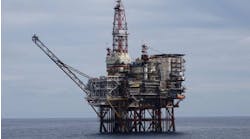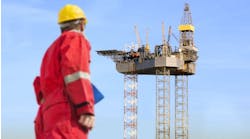Offshore staff
ABERDEEN, UK – Britain’s offshore oil and gas producers will look to halve their operational emissions over the next decade.
A new report published by Oil & Gas UK (OGUK), The Pathway to Net Zero: Production Emissions Targets, details how targets will be achieved progressively as the industry responds to the UK government’s goal of net-zero emissions by 2050.
Initiatives will include changes to operations, reductions in flaring and venting, and major capital investments at using electricity to power offshore facilities instead of gas.
The sector will also look to support broader efforts to decarbonize UK industry, using its experience and infrastructure to develop solutions such as industrial-scale carbon capture usage and storage, and use of hydrogen for heating and heavy transport.
OGUK chief executive Deirdre Michie said: “Given the limited impact that the severity of the lockdown has had on global emissions, it is clearer than ever that we need a fair, inclusive, and sustainable transition towards climate targets. We need a green recovery which supports jobs, supply chain companies, and energy communities.”
Report author and OGUK emissions improvement manager Louise O’Hara Murray said: “These targets would remove over 9 million tonnes [9.92 MM tons] of CO2 equivalent greenhouse gas emissions from our operations over the next decade; the same as taking nearly two million cars off the road for a year. Each year we will publicly show progress against our commitments on a sector-wide basis…
“Many of the major capital investment projects which will help our sector to decarbonize, including the powering of assets with electricity instead of hydrocarbons, the development and deployment of carbon capture and storage (CCS) and hydrogen both on and offshore, will need to be developed at scale to help other industries accelerate their own efforts to reduce emissions.”
During a recent briefing, O’Hara Murray said the government’s net-zero commitment recognizes that oil and gas will continue to play a part in the UK’s energy mix. Currently 70% of the UK’s needs are satisfied by oil and gas, and the percentage could still be 50% by 2050, she said.
The offshore industry is tackling emissions of carbon dioxide (CO2), nitrogen-oxide, methane and others, and the reductions will apply basin-wide, she stressed, “not just to specific assets and operations.”
Other sources on the UK continental shelf include onshore oil and gas reception terminals, helicopter flights, and offshore shipping, with logistics responsible for 5% of emissions, she said.
Regarding platforms, she explained, the main focus is on reducing emissions caused by power or heat generation, gas compression, flaring and venting. “In 2018, 1.2 MM t of gas was flared, so there is a need to improve gas recovery.
“At the same time, the new installations on the UK shelf are designed not to flare, so we are seeing a change.”
Later this year, OGUK plans to launch a methane reduction plan, O’Hara Murray said.
To achieve a step-change toward cleaner power generation, the association is examining the potential for full or partial electrification of UK North Sea platforms - none of which are currently connected to the national grid, unlike numerous facilities in Norwegian waters - and increased use of renewable energy offshore to meet platforms’ power needs.
One problem is that the older platforms are designed specifically to support gas turbines, and modifying these to accept power from shore could be a challenge, she admitted. Floating wind farms could be a solution, not just in the North Sea, but also for some of the remoter offshore facilities west of Shetland.
OGUK is examining the costs of electrification offshore the UK, she added, “and hopefully will issue the results soon.”
07/01/2020



